3.5 Precipitation: What Goes Up …
Name the different kinds of precipitation and explain how each forms.
One of the most important aspects of clouds is their ability to bring water to Earth’s continents. Without this water, life would exist only in the oceans. How does rain form and fall out of clouds?
Making Rain: Collision and Coalescence
The rain-
condensation nuclei
Small particles in the atmosphere, about 0.2 μm in diameter, on which water vapor condenses.
condensation nucleus
A small particle in the atmosphere, about 0.2 μm in diameter, on which water vapor condenses.
Collision and coalescence, the process by which cloud droplets merge to make raindrops (Figure 3.26), occurs in clouds at air temperatures of about –15°C (5°F) and warmer. When the raindrops become heavy enough, they fall to Earth. Referring back to Figure 3.5, without water’s cohesive property, cloud droplets would not form or merge, and there would be no rainfall.
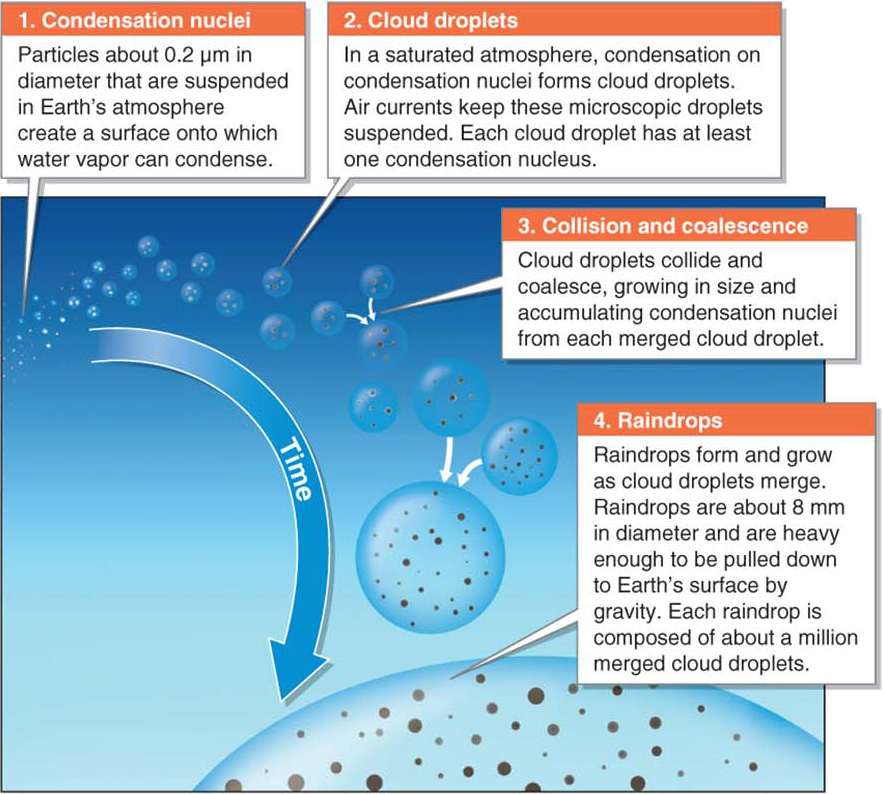
collision and coalescence
The process by which cloud droplets merge to form raindrops.
Normally, water freezes at 0°C (32°F), but the microscopic size of a cloud droplet allows it to enter a supercooled state rather than freezing at 0°C. In a supercooled state, water freezes quickly as it comes into contact with a solid object on the ground. Below about –10°C (14°F), a mixture of ice crystals and supercooled droplets occurs. Below about –40°C (or –40°F), all cloud droplets freeze. Supercooled cloud droplets are essential in the process of forming snow.
Making Snow: The Ice-Crystal Process
The ice-
ice-crystal process
(or Bergeron process) The process by which ice crystals grow within a cloud to form snow.
The ice-

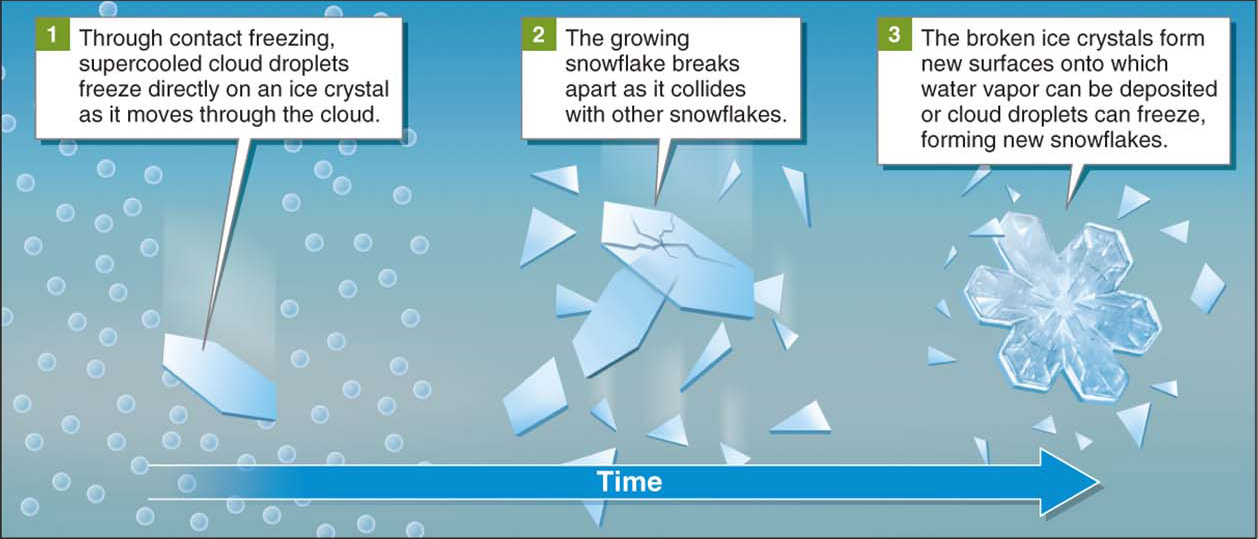
In warm clouds, the temperature is above 0°C, and the collision-
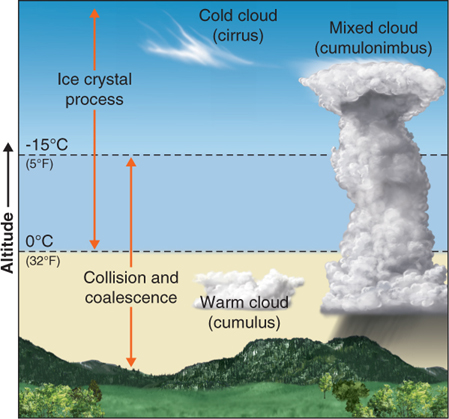
Four Types of Precipitation
With the exception of hail, all types of precipitation are produced either through the collision-
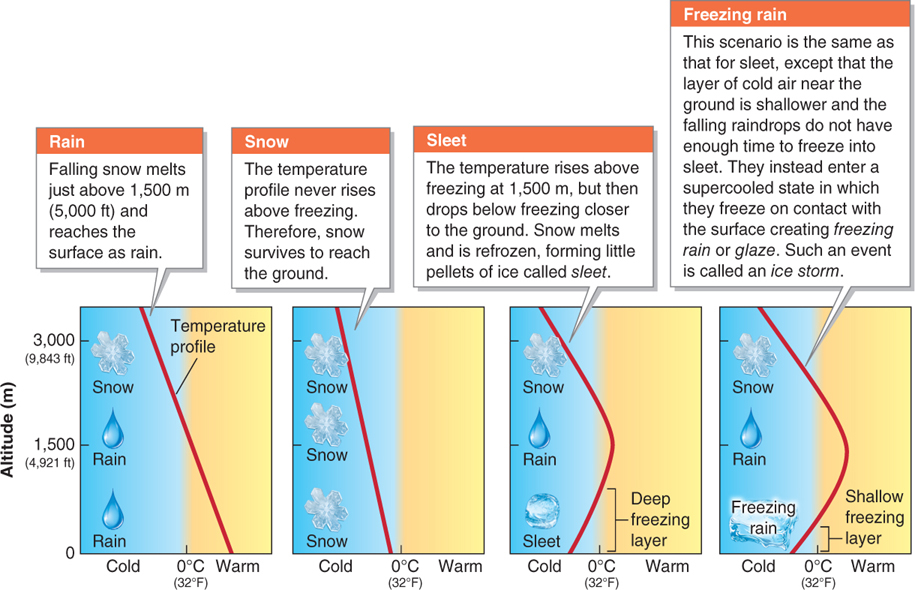
The world record for greatest snowfall in a single season was set on Mount Baker, in Washington State, which received 28.96 m (95 ft) in the 1998–
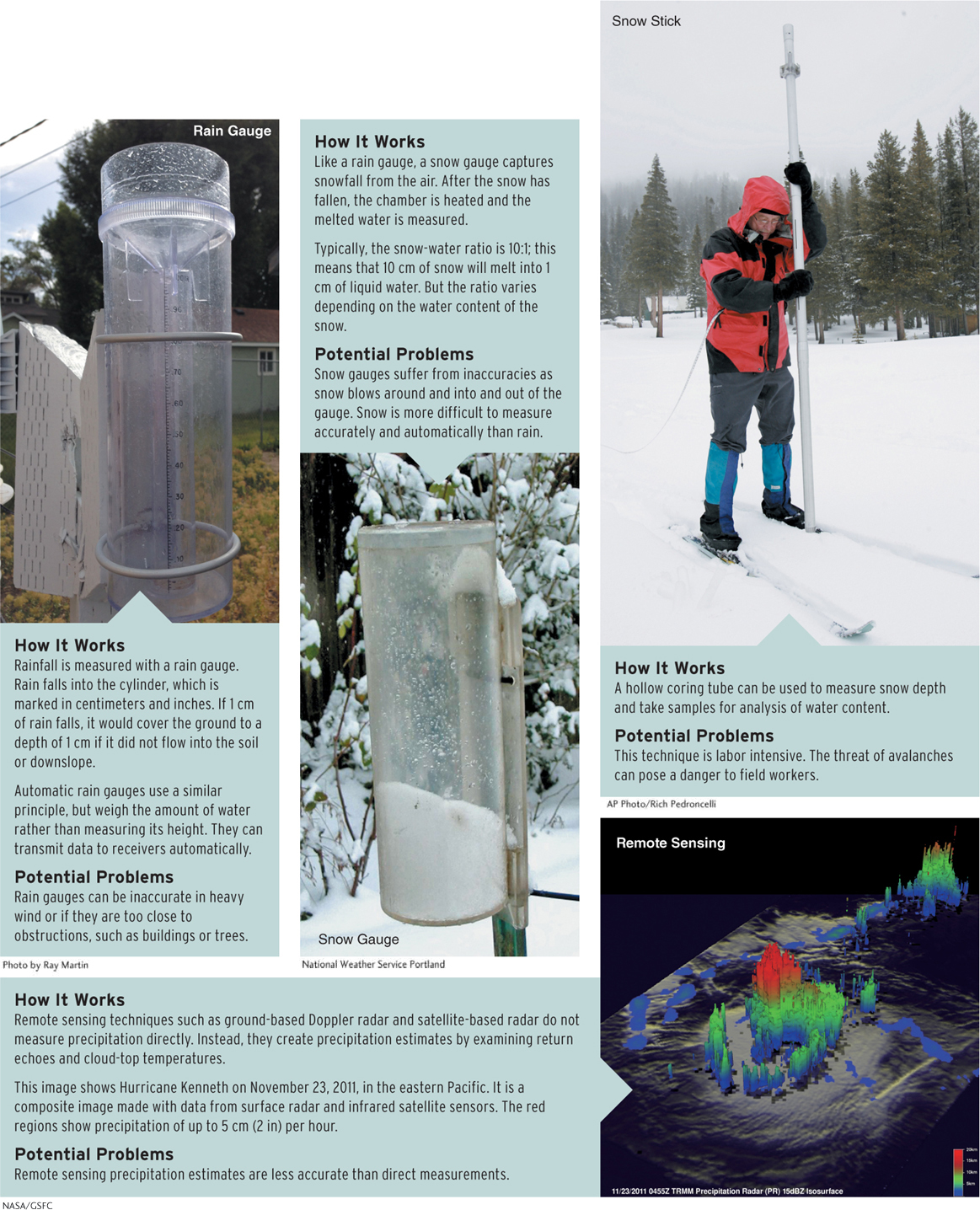
Hail Formation
Hail is formed in cumulonimbus clouds with strong vertical airflow. Hail consists of hard, rounded pellets of ice, called hailstones, that precipitate out of cumulonimbus clouds. Hailstones start as small pellets of ice called graupel, which form as supercooled droplets of water freeze directly on snow crystals. As graupel is transported through the upper parts of a cumulonimbus cloud, where the temperature is below freezing. Raindrops and cloud droplets freeze onto it and add to its mass. Updrafts keep hailstones suspended in the cloud. The longer the growing hailstone remains aloft in the cloud, the larger and heavier it will grow. Therefore, the size of hailstones is related to the strength of updrafts in the cumulonimbus cloud (Figure 3.32).
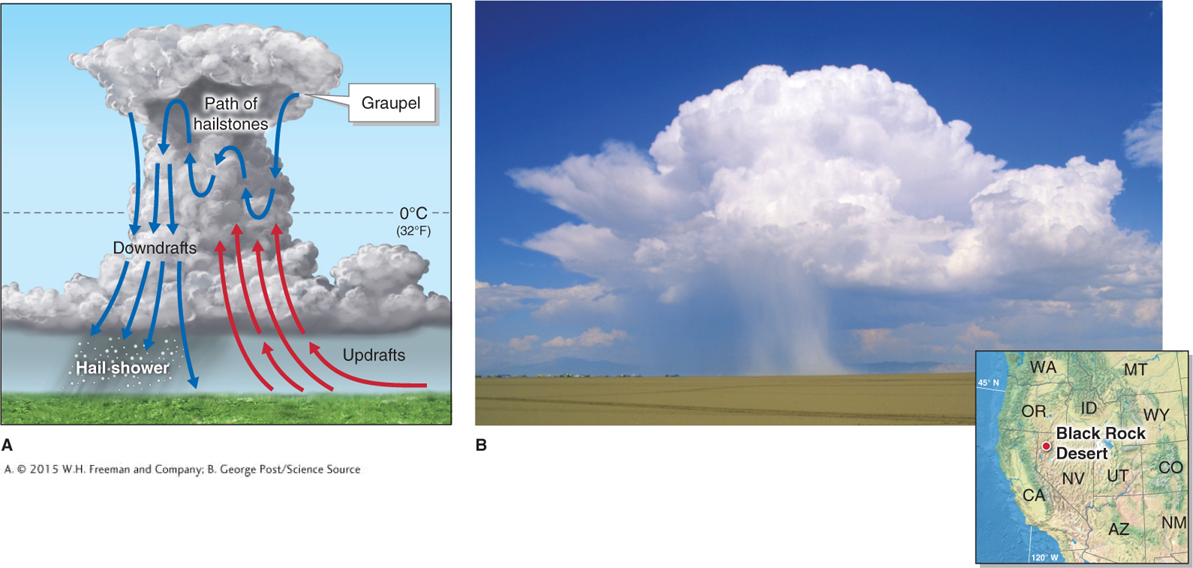
hail
Hard, rounded pellets of ice that precipitate from cumulonimbus clouds with strong vertical airflow.
Question 3.6
How big can hailstones get?
The world’s largest hailstone was nearly the size of a bowling ball. It fell in South Dakota in 2010.
Most hailstones are less than 2 cm (0.75 in) in diameter. Sometimes, however, they are much larger. In the late afternoon of July 23, 2010, in Vivian, South Dakota, the world’s largest officially recorded hailstone fell to Earth in a farm field (Figure 3.33). As recorded by a National Oceanic and Atmospheric Administration (NOAA) official, it measured 21.9 cm (8.63 in) in diameter—

Hail destroys crops and property, costing taxpayers more than a billion dollars per year. Most of this damage comes as hail pits fruits and disfigures them, making them worthless on the market, or damages young plants. Large hailstones can be deadly. Hailstones the size of tennis balls or larger fall to Earth at about 160 km/h (100 mph).